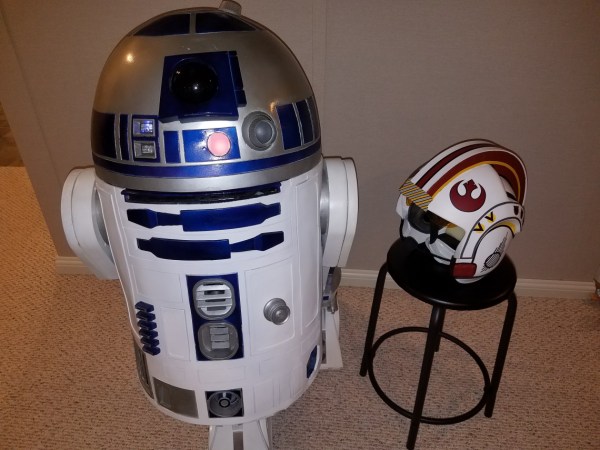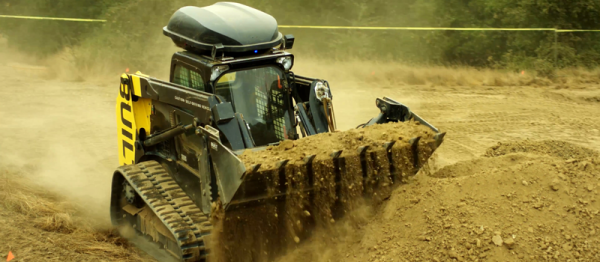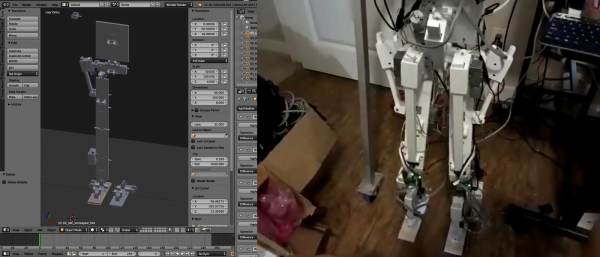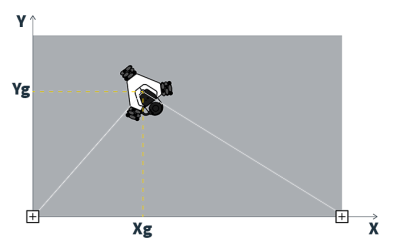Sometimes great projects keep evolving. [Bithead942] built himself an R2-D2 to accompany him when he goes a-trooping — but something didn’t feel quite right. Turns out, R2 was missing its signature beeping banter, so he made it more contextually responsive by implementing a few voice commands.
[Bithead942]’s main costume is that of an X-Wing pilot, and the replica helmet works perfectly; it already has a fake microphone — easily replaced with a working model — and the perfect niche to stash the electronics in the ‘mohawk.’
Even though the helmet has the perfect hiding spot for a circuit, space is still at a premium. Services like Alexa tend to be pretty accurate, but require WiFi access — not a guarantee on the convention floor. Instead, [bithead942] found that the EasyVR Shield 3.0 voice recognition board provided a suitable stand-in. It needs a bit of training to work properly(cue the montage!), but in the end it compares fresh audio commands to the ‘training’ files it has stored, and if there’s a match, triggers a corresponding serial port. It’s not perfect, but it most certainly works!













 What really caught our eye is the Goliath’s unique positioning system. While most CNC machines have the luxury of end-stops or servomotors capable of precise positional control, the Goliath has two “base sensors” that are tethered to the top of the machine and mounted to the edge of the workpiece. Each sensor connects to the host computer via USB and uses vaguely termed “Radio Frequency technology” that provides a 100Hz update for the machine’s coordinate system. This setup is sure to beat out dead-reckoning for positional awareness, but details are scant on how it precisely operates. We’d love to know more if you’ve used a similar setup for local positioning as this is still a daunting task for indoor robots.
What really caught our eye is the Goliath’s unique positioning system. While most CNC machines have the luxury of end-stops or servomotors capable of precise positional control, the Goliath has two “base sensors” that are tethered to the top of the machine and mounted to the edge of the workpiece. Each sensor connects to the host computer via USB and uses vaguely termed “Radio Frequency technology” that provides a 100Hz update for the machine’s coordinate system. This setup is sure to beat out dead-reckoning for positional awareness, but details are scant on how it precisely operates. We’d love to know more if you’ve used a similar setup for local positioning as this is still a daunting task for indoor robots.








